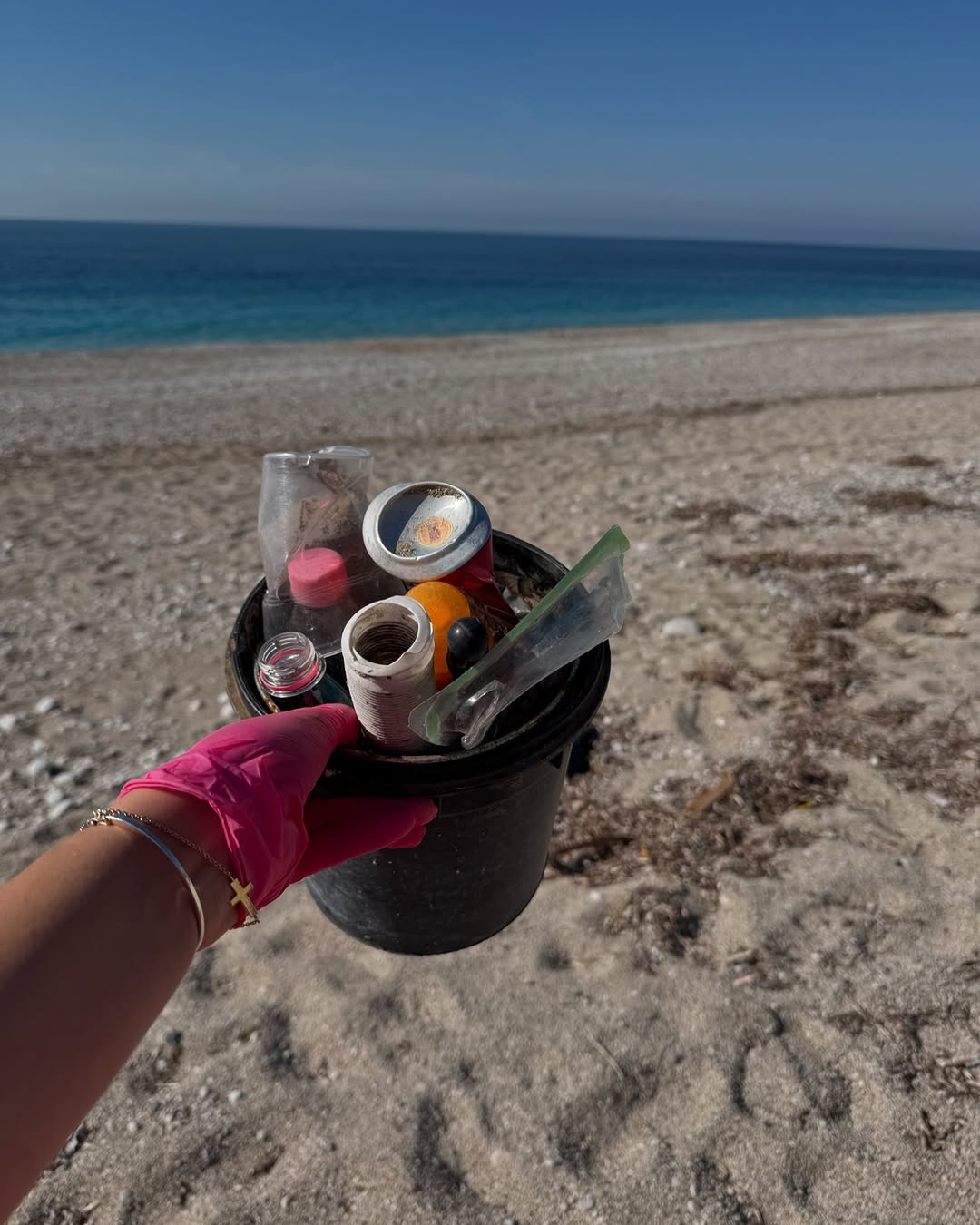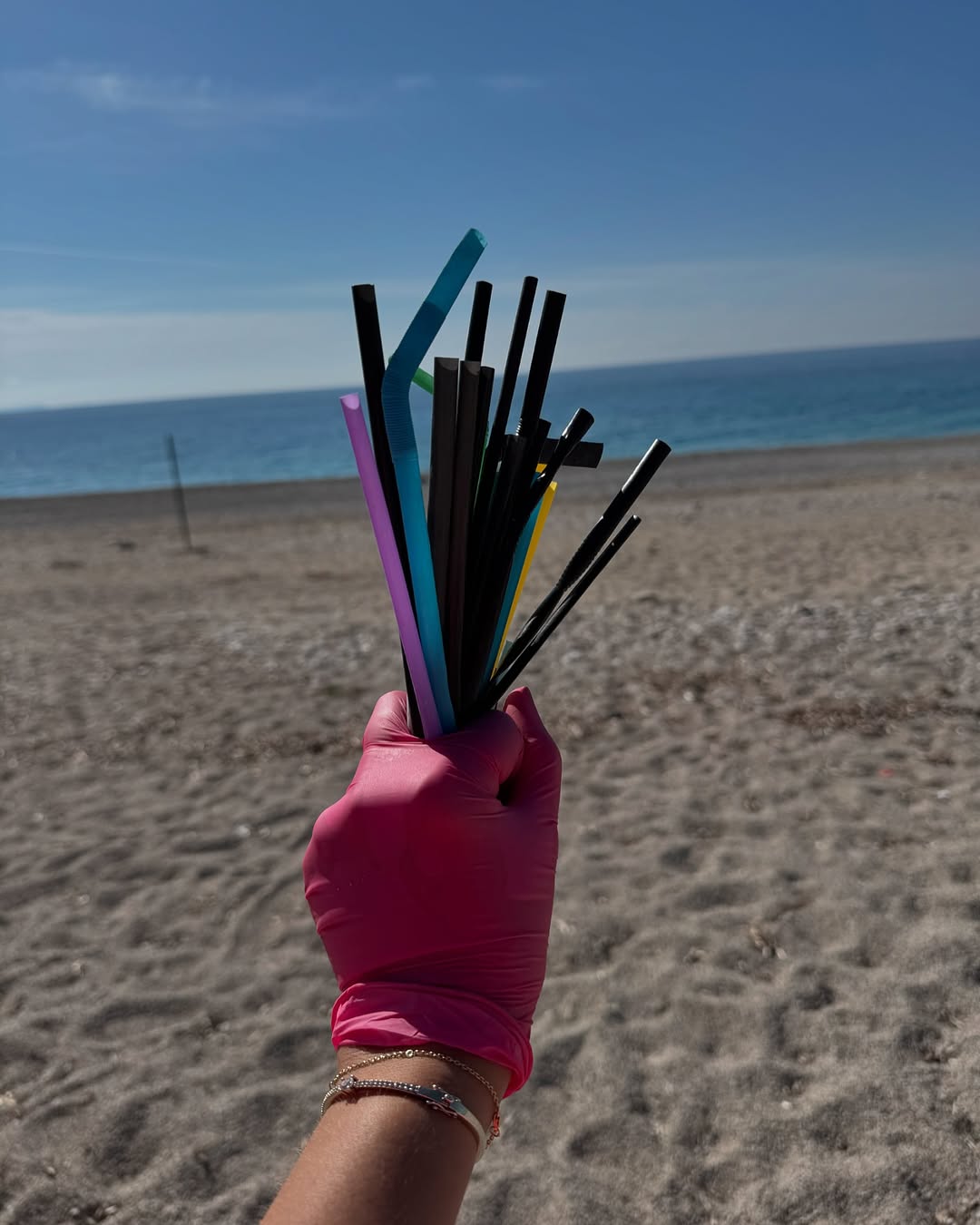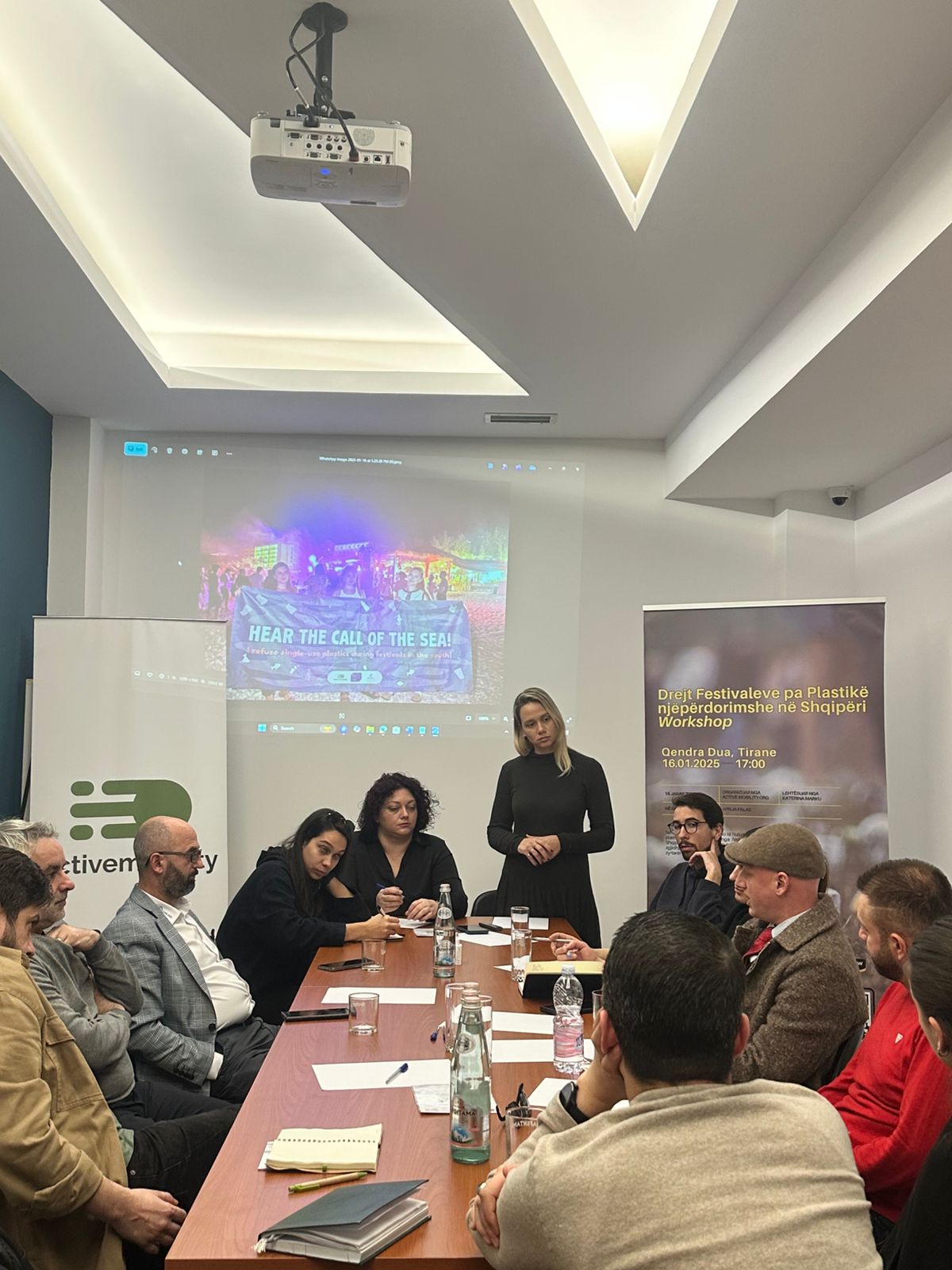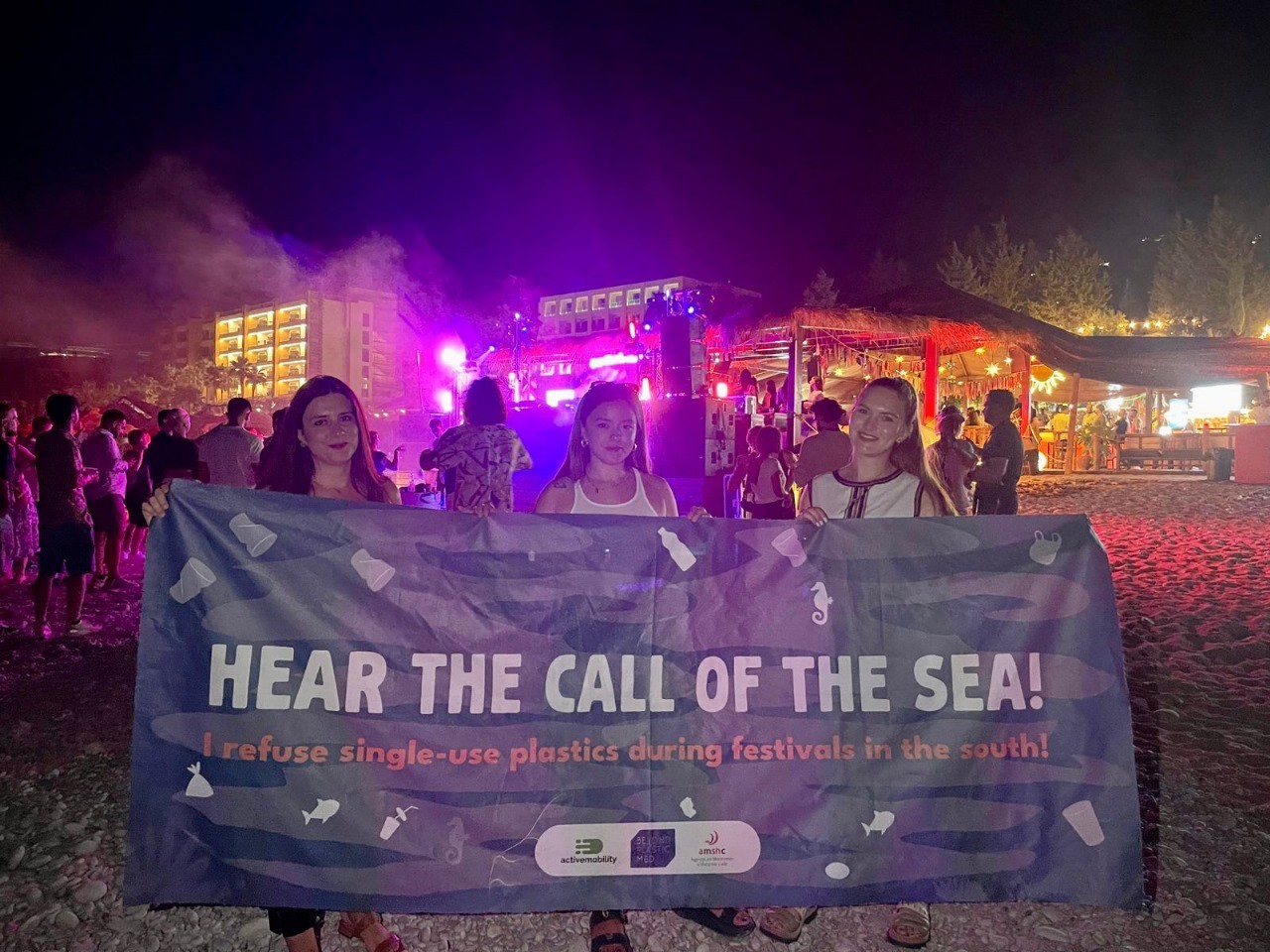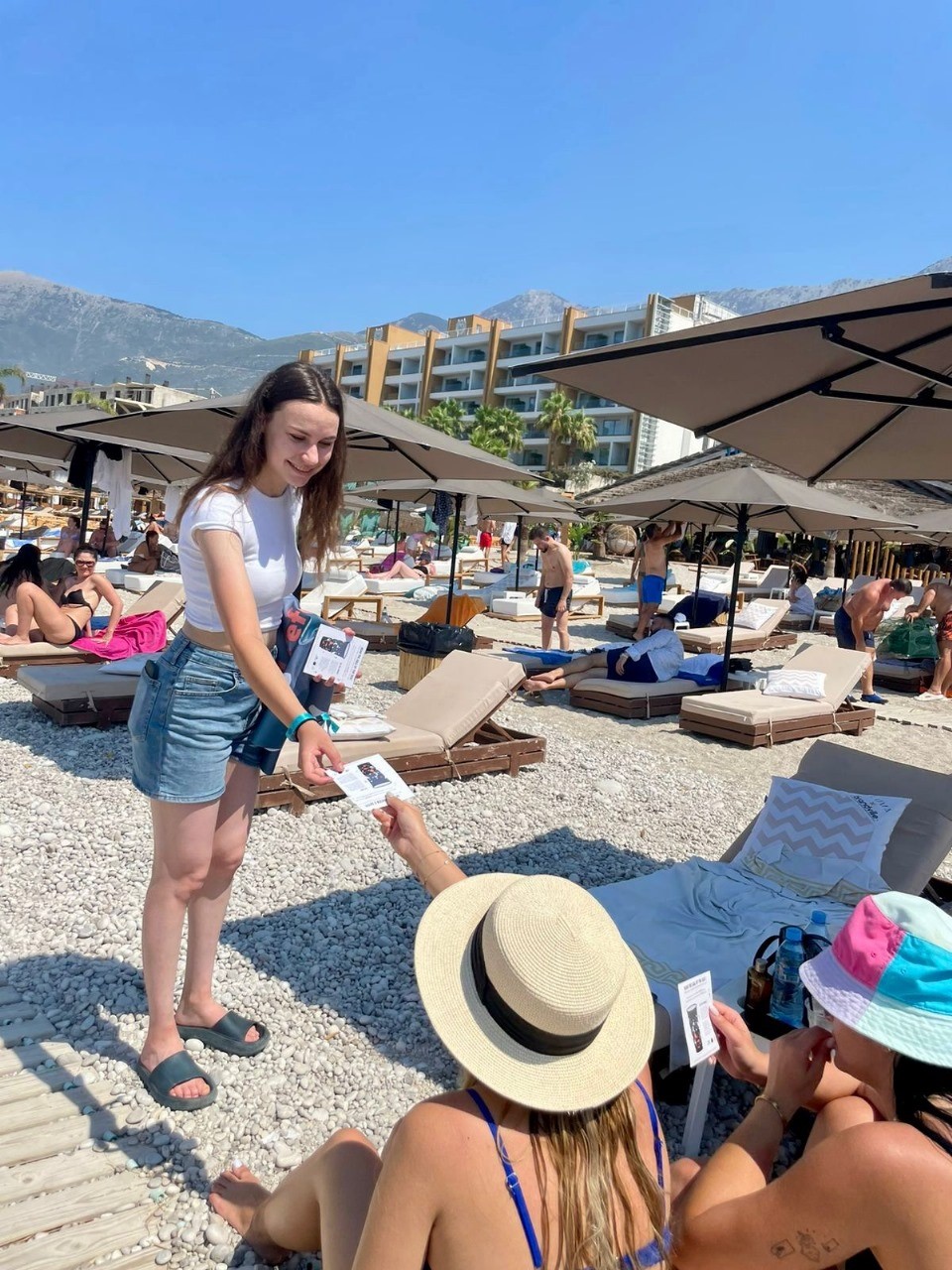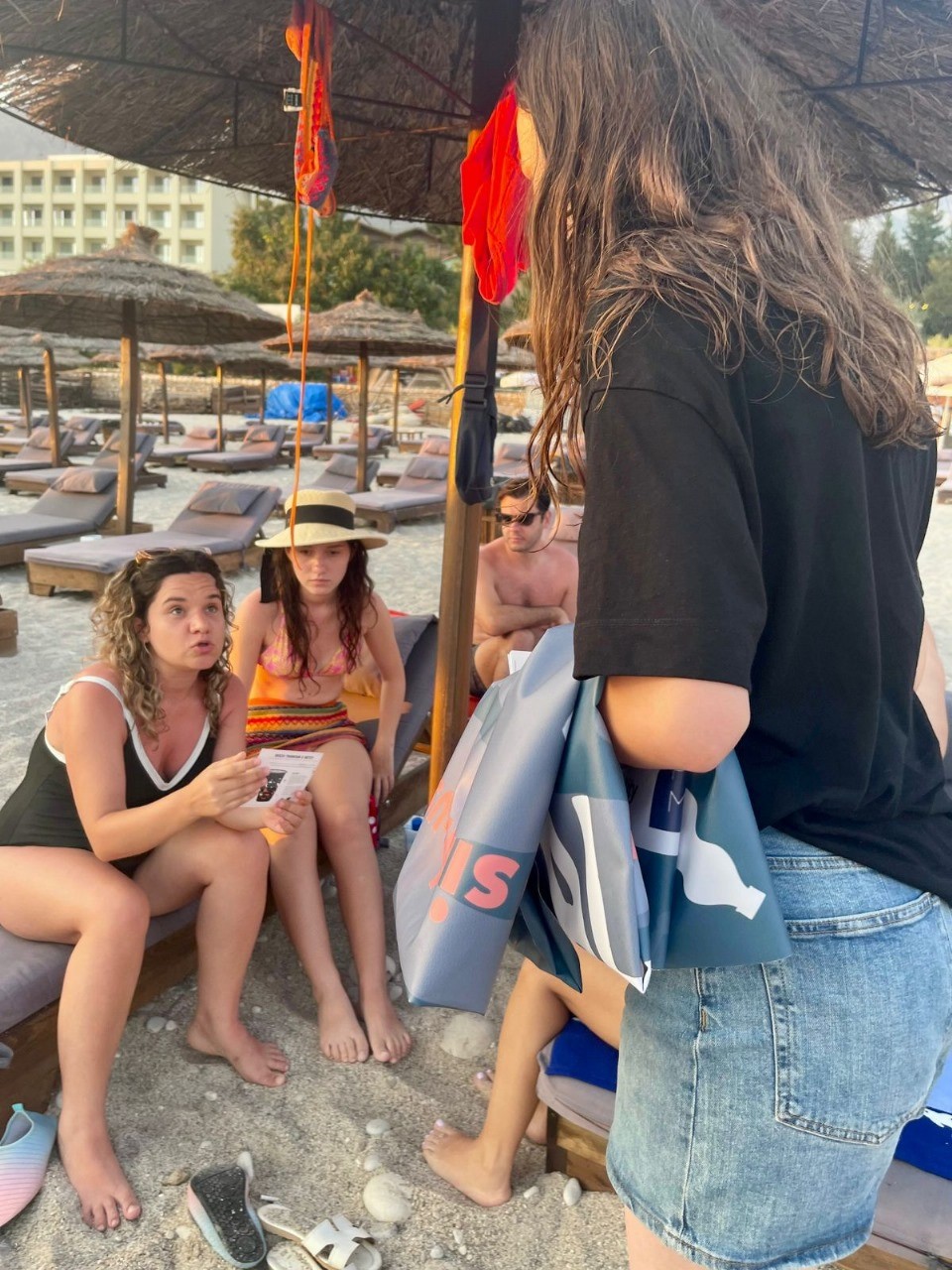Reconnecting with nature
The sea starts here!
The See Starts Here: Sustainable Ashtrays for Public Spaces in Southern Albania.
The Sea Starts Here! Cigarette butts are the most littered item, polluting our beaches and seas. This project installs sustainable, eye-catching ashtrays in public spaces across Southern Albania, stopping toxic waste before it reaches the water. By promoting responsible disposal and recycling, we create cleaner coasts and protect marine life. We have to keep our shores cigarette-free—because the sea starts here!
Albania
Regional
Southern Albania
Mainly urban
It refers to other types of transformations (soft investment)
Yes
2025-02-01
No
No
No
As a representative of an organisation
Cigarette butts are among the most common litter, polluting beaches, rivers, and urban spaces. In Southern Albania, where tourism is growing, cigarette waste threatens marine ecosystems and the beauty of coastal destinations. This project installs sustainable, well-designed ashtrays in key public areas to prevent cigarette litter from reaching the sea. By promoting responsible disposal and raising awareness, it aims to create cleaner, healthier environments for both residents and visitors.
The project focuses on reducing cigarette litter in high-traffic coastal and urban areas while encouraging behavioral change. Key target groups include tourists, local residents, event organizers, businesses, and municipalities seeking sustainable waste solutions. It introduces fireproof, visually appealing ashtrays in public spaces, integrates interactive and awareness-driven disposal methods, and collaborates with stakeholders to promote responsible waste management. The initiative also explores circular economy solutions by supporting the recycling of collected cigarette butts.
Aligned with the New European Bauhaus principles, the project promotes sustainability by preventing pollution, aesthetics by integrating well-designed disposal points into public spaces, and inclusivity by engaging diverse communities in maintaining cleaner environments. Southern Albania faces increasing waste pollution due to the rise in tourism, and existing waste management systems struggle to handle cigarette litter. By addressing pollution at its source, the project protects natural landscapes, supports sustainable tourism, and encourages long-term behavioral change, serving as a model for other coastal regions.
The project focuses on reducing cigarette litter in high-traffic coastal and urban areas while encouraging behavioral change. Key target groups include tourists, local residents, event organizers, businesses, and municipalities seeking sustainable waste solutions. It introduces fireproof, visually appealing ashtrays in public spaces, integrates interactive and awareness-driven disposal methods, and collaborates with stakeholders to promote responsible waste management. The initiative also explores circular economy solutions by supporting the recycling of collected cigarette butts.
Aligned with the New European Bauhaus principles, the project promotes sustainability by preventing pollution, aesthetics by integrating well-designed disposal points into public spaces, and inclusivity by engaging diverse communities in maintaining cleaner environments. Southern Albania faces increasing waste pollution due to the rise in tourism, and existing waste management systems struggle to handle cigarette litter. By addressing pollution at its source, the project protects natural landscapes, supports sustainable tourism, and encourages long-term behavioral change, serving as a model for other coastal regions.
Sustainability
Waste Management
Public Space
Behavioral Change
Circular Economy
This project tackles cigarette litter by installing durable, fireproof ashtrays in public spaces. Cigarette butts pollute soil and water, harming marine life. By preventing waste from reaching the sea, the project keeps public spaces clean and protects the environment.
The ashtrays are made from recycled materials and designed for easy maintenance. Placed in high-traffic areas, they encourage responsible disposal. Interactive features, like voting bins and QR codes, raise awareness about cigarette waste.
Collaboration with local authorities, businesses, and event organizers ensures proper use and upkeep. Recycling options for collected butts support a circular economy.
Aligned with New European Bauhaus values, the project improves public spaces, blends sustainability with design, and engages communities. It serves as a model for cities looking for simple, effective waste solutions.
The ashtrays are made from recycled materials and designed for easy maintenance. Placed in high-traffic areas, they encourage responsible disposal. Interactive features, like voting bins and QR codes, raise awareness about cigarette waste.
Collaboration with local authorities, businesses, and event organizers ensures proper use and upkeep. Recycling options for collected butts support a circular economy.
Aligned with New European Bauhaus values, the project improves public spaces, blends sustainability with design, and engages communities. It serves as a model for cities looking for simple, effective waste solutions.
This project transforms cigarette disposal into a visually appealing and engaging experience. Instead of plain bins, the ashtrays are designed to blend with public spaces, using creative shapes, local materials, and artistic elements that enhance their surroundings.
Interactive features, such as voting bins and customized designs for different locations, make proper disposal more intuitive and engaging. The ashtrays are easy to spot, yet they integrate well into urban and natural landscapes without being intrusive.
Cultural identity is reflected in the design, using local craftsmanship and materials that align with the character of beaches, parks, and city squares. Some units may feature artistic engravings or environmental messages, reinforcing public awareness while maintaining an attractive aesthetic.
By improving public spaces, this project enhances the quality of experience for both residents and visitors. Clean and well-maintained areas make cities more enjoyable, fostering a sense of civic pride.
Interactive features, such as voting bins and customized designs for different locations, make proper disposal more intuitive and engaging. The ashtrays are easy to spot, yet they integrate well into urban and natural landscapes without being intrusive.
Cultural identity is reflected in the design, using local craftsmanship and materials that align with the character of beaches, parks, and city squares. Some units may feature artistic engravings or environmental messages, reinforcing public awareness while maintaining an attractive aesthetic.
By improving public spaces, this project enhances the quality of experience for both residents and visitors. Clean and well-maintained areas make cities more enjoyable, fostering a sense of civic pride.
This project makes public spaces cleaner and healthier for everyone by reducing cigarette litter. The ashtrays are placed in busy areas, making them easy to use for all, including residents, tourists, and workers.
Designed for accessibility, they are placed at convenient heights and locations. Their simple, user-friendly design ensures easy and proper use.
The project is affordable and scalable, allowing cities, businesses, and events to adopt it without high costs. Local partnerships ensure long-term maintenance and impact.
Public engagement is key. Interactive features like voting bins encourage use, while awareness campaigns promote responsible disposal. By involving communities, the project creates a shared responsibility for cleaner spaces.
Designed for accessibility, they are placed at convenient heights and locations. Their simple, user-friendly design ensures easy and proper use.
The project is affordable and scalable, allowing cities, businesses, and events to adopt it without high costs. Local partnerships ensure long-term maintenance and impact.
Public engagement is key. Interactive features like voting bins encourage use, while awareness campaigns promote responsible disposal. By involving communities, the project creates a shared responsibility for cleaner spaces.
This project actively involves local communities, businesses, and municipalities to ensure its success and long-term impact. Citizens benefit from cleaner public spaces, making cities and beaches more enjoyable for everyone.
From the start, local input shaped the project, with discussions on the best locations for ashtrays. Businesses, event organizers, and city officials helped decide on placement and maintenance.
The project encourages public participation through interactive disposal methods, such as voting bins, making responsible waste disposal engaging. Awareness campaigns educate people about the impact of cigarette litter and encourage behavior change.
Municipalities and businesses play a key role in supporting and maintaining the ashtrays, ensuring sustainability. Civil society groups help spread awareness and promote recycling initiatives for cigarette butts.
By working with the community, not just for it, the project creates a shared responsibility for cleaner spaces. This approach aligns with the New European Bauhaus principles, making it a collaborative, sustainable, and people-driven initiative.
From the start, local input shaped the project, with discussions on the best locations for ashtrays. Businesses, event organizers, and city officials helped decide on placement and maintenance.
The project encourages public participation through interactive disposal methods, such as voting bins, making responsible waste disposal engaging. Awareness campaigns educate people about the impact of cigarette litter and encourage behavior change.
Municipalities and businesses play a key role in supporting and maintaining the ashtrays, ensuring sustainability. Civil society groups help spread awareness and promote recycling initiatives for cigarette butts.
By working with the community, not just for it, the project creates a shared responsibility for cleaner spaces. This approach aligns with the New European Bauhaus principles, making it a collaborative, sustainable, and people-driven initiative.
This project involves stakeholders at all levels to ensure its success and long-term impact.
At the local level, municipalities and businesses help choose locations, maintain ashtrays, and raise awareness. Event organizers and beach managers ensure proper use during large gatherings. Civil society groups support education campaigns and recycling efforts.
At the regional level, environmental organizations and tourism boards help expand the project to more cities and promote sustainable tourism.
At the national level, policymakers and waste management authorities provide guidance on cigarette waste disposal and recycling. Their involvement helps create policies that support cleaner public spaces.
At the European level, the project aligns with New European Bauhaus principles and connects with similar sustainability initiatives, sharing best practices and solutions.
Each stakeholder adds value by bringing expertise, resources, and networks. Their collaboration ensures the project is effective, widely adopted, and sustainable in the long run.
At the local level, municipalities and businesses help choose locations, maintain ashtrays, and raise awareness. Event organizers and beach managers ensure proper use during large gatherings. Civil society groups support education campaigns and recycling efforts.
At the regional level, environmental organizations and tourism boards help expand the project to more cities and promote sustainable tourism.
At the national level, policymakers and waste management authorities provide guidance on cigarette waste disposal and recycling. Their involvement helps create policies that support cleaner public spaces.
At the European level, the project aligns with New European Bauhaus principles and connects with similar sustainability initiatives, sharing best practices and solutions.
Each stakeholder adds value by bringing expertise, resources, and networks. Their collaboration ensures the project is effective, widely adopted, and sustainable in the long run.
This project brings together urban design, environmental science, waste management, and behavioral psychology. Urban design ensures the ashtrays fit well in public spaces, while environmental science guides material choices for durability and safety. Waste management experts develop collection and recycling solutions, and behavioral psychology helps encourage proper disposal. These fields worked together from the start, making the project more effective, engaging, and sustainable.
This project goes beyond traditional waste bins by making cigarette disposal interactive, visually appealing, and sustainable. Unlike standard ashtrays, it uses voting bins and awareness campaigns to change behavior. The design blends into public spaces while using recycled materials for sustainability. It also explores cigarette butt recycling, a step often missing in mainstream waste management. By combining design, engagement, and circular solutions, this project creates a new model for cleaner public spaces.
This project follows a practical, community-driven approach to reduce cigarette litter. It begins with site selection, identifying high-traffic areas where cigarette waste is a problem. The ashtrays are designed to be functional, durable, and visually appealing, ensuring they fit well in public spaces.
Public engagement is key. Voting bins and awareness campaigns encourage responsible disposal and behavior change. Local municipalities, businesses, and civil society are involved in placement, maintenance, and promotion. The project also explores circular solutions by partnering with recycling initiatives for cigarette butts.
By combining urban design, environmental awareness, and waste management, this approach ensures long-term impact and scalability.
Public engagement is key. Voting bins and awareness campaigns encourage responsible disposal and behavior change. Local municipalities, businesses, and civil society are involved in placement, maintenance, and promotion. The project also explores circular solutions by partnering with recycling initiatives for cigarette butts.
By combining urban design, environmental awareness, and waste management, this approach ensures long-term impact and scalability.
This project is highly adaptable and can be implemented in any city, beach, or public space facing cigarette litter issues. The methodology of placing well-designed ashtrays in high-traffic areas, combined with interactive disposal methods like voting bins, can be replicated anywhere. Municipalities, businesses, and event organizers can easily adopt the approach with minimal costs and maintenance. The recycling aspect can be expanded, creating a circular waste solution in different regions.
This project tackles global pollution and waste management challenges by providing a local solution to cigarette litter, one of the most common and harmful waste types. Cigarette butts contain microplastics and toxins that pollute soil and water, affecting ecosystems worldwide. By installing sustainable ashtrays and promoting responsible disposal, the project prevents waste from reaching the sea, protects marine life, and keeps public spaces clean. It also supports the circular economy by exploring recycling options, turning local action into a scalable global model for waste reduction.
The project has reduced cigarette litter in high-traffic public spaces, preventing waste from reaching the sea and improving cleanliness in urban and coastal areas. Direct beneficiaries include residents, tourists, businesses, and municipalities, who now enjoy cleaner environments and lower maintenance costs. Indirectly, the project protects marine ecosystems by reducing toxic waste and microplastic pollution.
The introduction of interactive ashtrays has increased responsible disposal behaviors, while public awareness campaigns have led to a shift in attitudes toward cigarette waste. The project has also encouraged local authorities and businesses to take an active role in waste management, ensuring long-term sustainability.
By demonstrating that design, public engagement, and recycling solutions can improve waste management, the project serves as a replicable model for other cities and regions.
The introduction of interactive ashtrays has increased responsible disposal behaviors, while public awareness campaigns have led to a shift in attitudes toward cigarette waste. The project has also encouraged local authorities and businesses to take an active role in waste management, ensuring long-term sustainability.
By demonstrating that design, public engagement, and recycling solutions can improve waste management, the project serves as a replicable model for other cities and regions.

